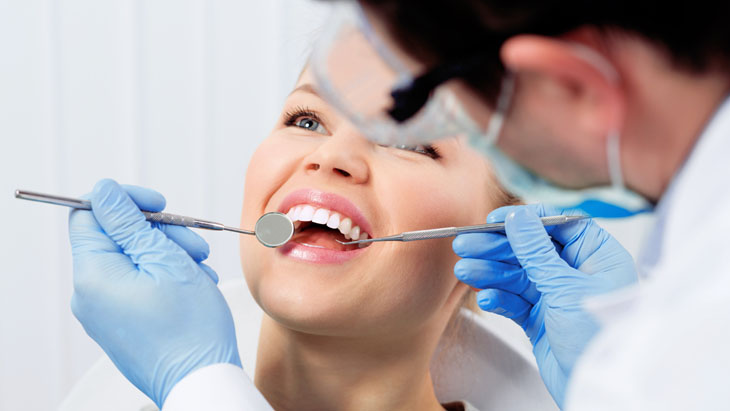Hair transplant in Turkey: cost and tips
9-Nov-2022
What Is a hair transplant?
A hair transplant is a non-surgical procedure that moves hair follicles from the donor area, which is located at the back of the scalp, to the receptor area, where the bald patches need to be treated.
Advantages of hair transplant in Turkey
-
Turkey’s beneficial climate, which protects the follicles from damage
-
Turkey has a lot of medical centres, which provide full excellent medical care
-
The affordable cost compared with European and American countries
-
Turkey has highly qualified doctors
-
Turkey provides the latest and the best hair transplant techniques
-
Turkey provides a comprehensive treatment trip and A-class luxury, in terms of luxurious hotels, private transportation and interpretation services
Disadvantages of hair transplant in Turkey
In the past, probably the only barrier to hair transplant in Turkey was the language; almost no one spoke any other language but Turkish. Nowadays, all medical centres offer interpretation services for their customers, both in English and Arabic, which helps to eliminate that barrier.
Hair transplant techniques in Turkey
FUE technique
The FUE (Follicular Unit Extraction) technique involves harvesting follicles from the donor area using a device called a Micro Motor and moving them to the receptor area. The doctor opens small channels in the receptor area where the follicles will be implanted using fine medical forceps.
DHI technique
The DHI (Direct Hair Implantation) technique uses the CHOI Pen Implanter, which is a device that looks like a pen. Hair follicles are implanted one by one directly into the receptor areas without having to open channels. Each follicle is placed in a specific direction, angle, and depth.
Robot technique
The robot technique utilises a device that assists the doctor to perform the hair transplant easier and faster. It can define the baldness area and check the donor area to choose the best follicles for implantation. It also offers post-surgery 3D pictures for hair transplant.
Stem cell hair transplant
The doctor extracts the stem cell from the human body, whether bone marrow or fatty tissues. Once the doctor extracts the stem cell from the body, it goes through several stages to create an artificial fiber, which is similar to natural hair. The patient can then choose their desired hairstyle. They can determine the colour and type of their new hair. The final stage involves implanting the hair with a fine device called Micro Nodes.
Artificial hair transplant (Biofibre)
An artifical hair transplant (Biofibre in America) is the perfect solution for those who are suffering from complete baldness and a weak donor area. In this process, the doctor implants the Biofibre, or artifical hair, which is made up of fine fibers that have identical characteristics to natural hair.
Read More: Biofibre Hair Transplant, Benefits and Risks
Platelet-Rich Plasma (PRP)
PRP is a natural procedure for strengthening the hair follicle. A small amount of blood is drawn from the patient and centrifuged to separate the plasma, red blood cells and white blood cells.
Mesotherapy injection
Mesotherapy is used to treat a lot of hair problems such as hair loss and hair thinning. Mesotherapy consists of vitamins, proteins, minerals, in addition to plant extracts and nutritional supplements, that are injected into the bald area and the areas suffering from thinning hair.
Hair transplant candidates
There are some people who can’t undergo a hair transplant procedure for a variety of reasons. However, there are distinct groups of people who are good candidates for the procedure:
-
People who are suffering from excessive hair loss and genetic baldness
-
Those who have strong donor areas, good overall health, and are free from any diseases that prevents hair transplantation
-
The person who wants to undergo a hair transplant must be over the age of 25 years
Contraindications for hair transplantation
As mentioned above, a hair transplant isn’t appropriate for everyone. Candidates should be healthy enough to undergo any medical procedure, including hair transplantation, and should be aware of the diseases that are contraindicative to undergoing a hair transplant, including:
-
High blood pressure
-
HIV
-
Hepatitis (C)
-
Diabetes Types II and III
-
Thyroid diseases
-
Heart disease
-
Anaemia
-
Leukaemia.
Female hair transplant contraindications
In addition to the hair transplant contraindications discussed above, women have a specific contraindication that is related to hormonal imbalance. Unfortunately, many women suffer from hormone imbalances over their lifetimes, such as at puberty, menstrual periods, pregnancy, childbirth and breastfeeding. During these periods, hormones are unbalanced, and this is the reason behind excessive hair loss and body weakness. As a result, women who are found to have a hormonal imbalance cannot under a hair transplant until the hormone problem has been treated.
Key preliminary tests
Prior to a hair transplantation, it is necessary to perform some key preliminary tests to establish that the candidate is healthy, including:
-
Blood tests, to check for diabetes and blood-borne diseases like hepatitis and HIV
-
Dermatology check-ups to examine the condition of the scalp just before undergoing the hair transplant procedure
Vital instructions before hair transplant
-
Abstain from smoking a minimum of two weeks before the hair transplant procedure, as smoking affects the oxygen levels in the blood, which is considered essential for a speedy recovery period and for accelerating the growth of the newly implanted hair follicles.
-
Abstain from drinking alcohol and herbal tea as they cause blood thinning, leading to hair transplant failure.
-
Avoid caffeine such as coffee and other stimulants for at least 4 days before hair transplant. These substances affect the anaesthesia process; it is difficult to anaesthetise a person who drinks caffeine.
-
It is preferable to adopt a healthy and balanced diet in the time running up to surgery.
-
Stop taking medical drugs, which lead to blood thinning, such as aspirin.
-
At consultation, it is a good idea to inform your doctor of what conditions you have and what medications you are taking. This is in case there is a need to stop a specific medication for the duration of the process and required healing time.
Wound and burns hair transplantation
Initially, the doctor examines the wound or burns area to determine if it is alive and the sensory neurones can get enough oxygen. If there is sensation in the area, a hair transplant can be done. Otherwise, it cannot.
Facial hair transplant, beard and eyebrow hair transplant
DHI technique is considered the core technique for facial hair transplant. The CHOI Pen Implanter is used to implant each follicle in the same direction of the existing hair of the beard or eyebrow. In addition, it offers maximum density, as the follicles are implanted so close to each other.
What are the required medicines after hair transplant
The doctor will prescribe some necessary drugs following a hair transplant, including:
-
Anti-inflammatory medication
-
Anti-allergic medication
-
Creams and ointments
-
Medical shampoo and lotion for hair washing
How is a hair transplant performed?
-
The first stage of the hair transplant procedure is an examination of the scalp and hair. The doctor defines the donor area, determines the needed number of extracted follicles, and draws the frontal hairline.
-
Blood tests are carried out, as mentioned above.
-
In the case of an FUE hair transplant, the entire hair is shaved. For the DHI technique, only the donor area hair is shaved. Following this, local anaesthesia is administered.
-
The doctor extracts the follicles from the donor area using the Micro Motor device. They are placed in a solution called HypoThermosol to keep them alive as much as possible.
-
The implantation stage can then begin. The FUE technique utilises a fine medical lancet to open small channels for the implantion of the follicles. In the case of the DHI technique, the doctor uses the CHOI Pen implanter to open the channels and implant the follicles at the same time, with just one press.
Once the hair transplant procedure is completed, a bandage is placed on the donor area and a band placed around the head to prevent swelling.
Hair washing after hair transplant
72 hours after a hair transplant, you will need to visit the medical centre for the first hair washing. It is important to keep in mind the exact method described by the hair transplant expert, listed here:
-
You should apply medical lotion on your scalp and the implanted areas. You should distribute the lotion on the scalp gently with your fingertips, and then leave the lotion for at least 40 minutes.
-
Afterwards, wash your scalp with a light lukewarm water flow to remove the lotion.
-
Now, apply the medical shampoo on your scalp and leave it for five minutes until the scalp fully absorbs the shampoo.
-
Dry your hair using soft tissue like cotton. You must avoid heavy and coarse towels as much as possible.
-
Once washing is complete, you can apply medical cream to stimulate blood circulation and reduce scalp dryness.
Instructions after hair transplant
-
Do not take off your headband in the initial 48 hours, to prevent facial swelling.
-
Do not bend over and keep your head up as much as possible for at least three days, to avert swelling around your eyes.
-
You must sleep on a couple of pillows to keep your head elevated to prevent swelling.
-
Do not wash your hair for 72 hours after the hair transplant procedure.
-
You should adhere to the instructions for hair washing.
-
You should refrain from doing sports or weight lifting for 15 days. Such a hard activity might lead to lose of the new follicles and bleeding.
-
Avoid exposure to direct sunlight, heat and humidity for at least a month. Sunlight contains UV rays that might damage your new hair follicles. Accordingly, you should wear a medical hat once you are going out.
-
You must keep away from rain and dust to avoid damaging your new hair follicles.
-
You should pay high attention while wearing and taking off your clothes to avoid touching or hurting your scalp.
-
Swimming is forbidden, in the sea for three months or the swimming pool for two months. The swimming pool contains harmful chemicals that might damage your new hair follicles.
-
Refrain from intercourse for a week after the transplant.
-
Avoid smoking for at least two months after the implantation. Smoking affects the arrival of the required ratio of oxygen to implanted hair follicles, which hinders growth and leads to hair fall.
-
You should adhere to taking the medications prescribed by your doctor. These medications help to accelerate the blood clotting process and promote the growth of the new follicles.
-
You must keep using the medical shampoo for hair washing and avoid chemical shampoos.
-
Do not take a Turkish bath or sauna for at least a month.
-
It is preferable to utilise platelet-rich plasma (PRP) to boost the implanted follicles for accelerated growth.
Complications after hair transplant and how to deal with them
-
You might feel a little pain; however, you can take painkillers that are prescribed by your doctor.
-
Bleeding. This is a normal occurrence for getting rid of the existing fluids in the scalp.
-
Swelling might occur due to the fluids of anaesthesia in the scalp.
-
It is normal to feel a headache for the first 24 hours.
-
Feeling itchy, that might last for three days.
-
Feeling numbness and tingling in your scalp, in addition to nausea and lack of balance due to the local anaesthetic.
-
You might experience superficial and fine acne or pimples on your scalp. This can be managed simply by massaging the scalp lightly with the fingertips while taking a shower. However if it doesn't disappear within a few day, you will need to consult your doctor.
-
You might find some deep acne in your scalp. You can do a circular massage on this while taking a shower, it helps it to fade away. You should consult your doctor if this acne does not disappear by itself.
-
You might experience some inflammation in the scalp lasting for up to three days.
In case of a complication that lasts for more than three or four days, you should consult your doctor.
Hair growth stages after hair transplant
-
1-2 months: implanted hair starts to fall after the third week of transplantation. Following that, metabolism of the follicles starts, depending on oxygen levels. The new hair initiates growth within the follicles, then the hair begins to grow.
-
2-5 months: The implanted hair start to grow from the end of the second month until the fifth month. At this time, you will get 40% of the hair transplant results.
-
6-8 months: At the beginning of the sixth month, sustainable growth of the implanted hair starts until the eighth month, giving 70% or 80% of the hair transplant results.
-
8-12 months: In the period of eighth month to a year, you will get 100% of the results.
Tips after hair transplant
It is important to adhere to all instructions mentioned above; otherwise, your new follicles cannot get what they need to grow, as well being at risk of falling. The most vital tips to take onboard are the method of hair washing, as well as avoiding exercise, smoking, weight lifting, heat and humidity.
Hair transplant in Turkey costs
Hair transplant costs in Turkey vary from around £1609 for FUE hair transplantation to £1788 for DHI hair transplantation.
In practice, the price will depend on each individual's particular needs in terms of the type of baldness and the technique used. However, hair transplantation costs in Turkey are considered reasonable and comparative low compared to other European, American, or even Arabic countries.
To find out more about hair transplant in Turkey contact the Turkeyana Clinic experts now for a free consultation.


